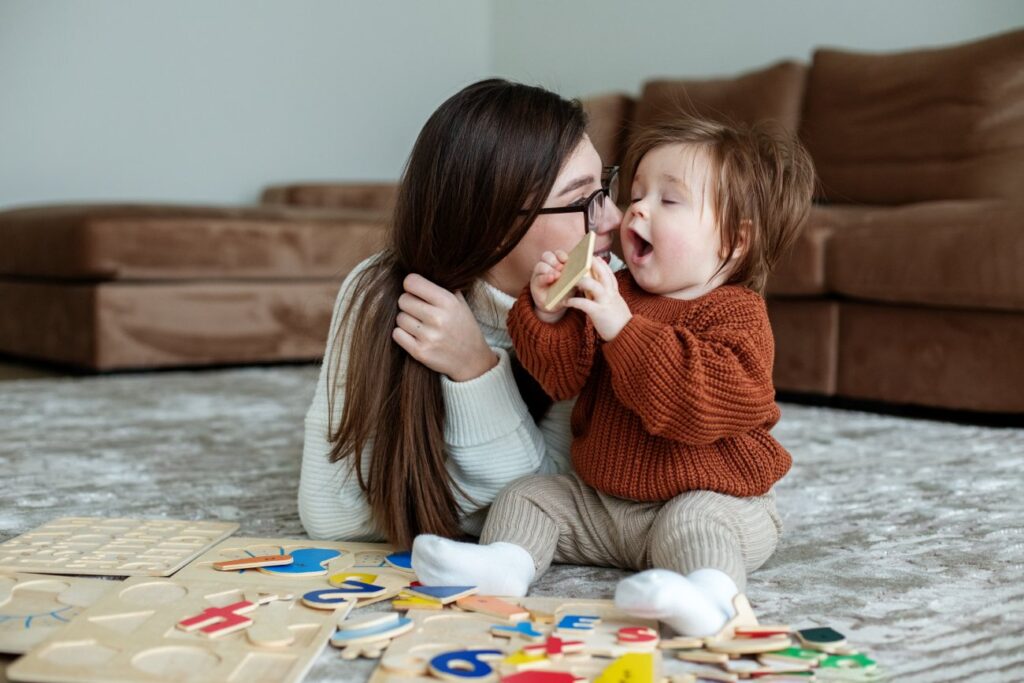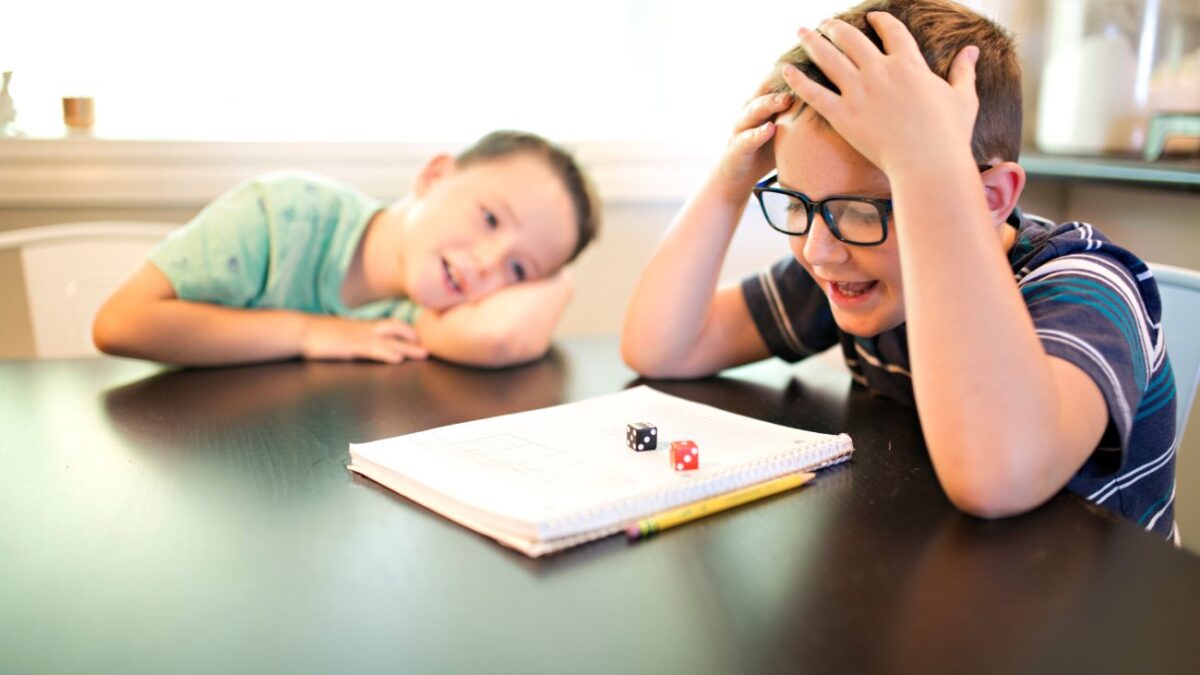 Our essential mathematical ability is revealed from the early childhood stages, in which one can quickly identify those whose preoccupation with data and numbers is attractive and those who feel reluctant even from the simplest arithmetic operations. As parents, we can make math accessible and closer to our children’s lives from kindergarten and turn the practice of numbers into a game that has a lot of interest and fun while at the same time giving them a skill that will accompany them for the rest of their lives.
Our essential mathematical ability is revealed from the early childhood stages, in which one can quickly identify those whose preoccupation with data and numbers is attractive and those who feel reluctant even from the simplest arithmetic operations. As parents, we can make math accessible and closer to our children’s lives from kindergarten and turn the practice of numbers into a game that has a lot of interest and fun while at the same time giving them a skill that will accompany them for the rest of their lives.
The following six fantastic games connect arithmetic with movement, creative activity, and healthy competition, and even include a little “mind-reading” – you will be happy to experience them with your children.
Task Cube: The next game is suitable for children aged 4-6 and can be combined with several children to play in turns or with a single child. The game combines learning basic arithmetic like counting with fun and frantic exercise like jumping and clapping. The game is simple to prepare and understand and will be perfect for moments when the children are at home unemployed and inactive.
Materials required: 2 game dice marked with numbers, one large game cube (you can use a regular wooden or plastic game cube on which you will paste white, an adhesive paper that you can write on), Marker/pen (you can use a single marker or six markers with different colors)
how do you play?
-
-
- Using the marker, write six body movements or actions on each side of the large task cube (one step per wig). The activities can be: clapping a jumping spoon on one leg and rotating instead of a frog jumping wheel and the like.
- To help children who cannot read yet, you can draw on the cube wig the task indicated on it and write on each wig in a different color marker to differentiate between the tasks.
- Have your child roll the task cube with the two-game dice and ask them to connect the numbers that came out on the game dice with the numbers and perform the task on the task cube as many times as they get in the connection result of the two numbered dice.
- Roll the dice in turns, according to the number of participating children, or play with a single player and repeat the game as much as you like.
-
Finger colors: The next game will develop your children’s mathematical learning abilities and fine motor skills, which help with essential life activities like writing, tying laces, typing, and more. The game, which includes gouache, will suit children aged 3-6 and engage them in a fun and educational way.
Materials required: brown art paper (you can use brown paper), white paper A3 size / Bristol, white plastic glue, black marker, red gouache paint, green marker (optional)
how do you play?
A. Cut nine shapes of barrels from the brown art paper, number them with the black marker in digits 1-9, and draw a top and bottom line on each shape to give it the look of a barrel.
B. Glue the barrels with the plastic glue to the white paper freely and without maintaining the order of the numbers. Be sure to leave a space between the glued barrels.
Pour a bit of red gouache paint into a disposable cup or small vessel.
C. Show your children how to use their index finger to dip it in the gouache color and create apple-like red dots over each barrel, as indicated by the number of units.
D. After the children have drawn the apple dots, suggest that they use the green marker to decorate them and add a stalk and leaves.
E. The beautiful piece is ready when all the apples are placed over the barrels according to their number and ready to be sent to the imaginary packing house of the painted fruits.
Candy Dominoes: The next game uses the dominoes found in most homes to learn the ratio of a large number to a small number. The game has a considerable incentive to use candies to mark the result. Still, it is possible and worthwhile to replace the sweets with healthy substitutes such as pieces of triangular-shaped apples. The game will be suitable for children aged 5-7 who are learning basic connection operations and can be combined with a variable number of participants depending on needs.
Materials required: Domino bricks in the shape of a triangle or fruit cut into the shape of an isosceles triangle.
How to play?
A. Place the dominoes on the table in 2 close columns, with every two bricks placed in parallel rows (pairs of columns should be prepared as the number of participants).
B. Place candies or fruit units next to the dominoes and ask the children to count the two sides of the domino brick in each row and connect the number of dots in each brick.
C. After the children have counted and connected the points in the domino bricks, they must decide which brick has the most points and place the lollipop or fruit according to the solution they have reached, according to the shape of the sign; larger / smaller than …
C. If the number of dots is the same in the same row, the children should place two candies or triangular pieces of fruit, similar to the sign.
D. When the children finish marking their dominoes, the parent will go over the answers and give the candy or fruit to each child who answered correctly.
The Dara game coming from Nigeria is an upgrade of the 3 in a row we are familiar with. The game, designed for couples, develops strategic, analytical, and mathematical abilities and will be suitable for ages 6-12. Still, unlike the well-known games, Dara does not end when one player forms a uniform trio in a row but continues until one of the players is left with two-game blocks and can not form another trio.
Materials required: 24 game bricks in two colors (12 bricks per color). A game board consisting of white paper, on which is drawn a 5 * 9 square grid – click here to print the game board
how do you play:
1. In the first stage, each participant, in turn, places one game stone on the board wherever he wants (without creating a trio in a row) until all the stones are placed on the board, leaving six empty squares out of the 30 on the board.
2. In the second stage, each player must, in turn, move their game stone to the adjacent free square to create a trio (movements and rows can be vertical or balanced, but not diagonal). A player who forms a trio removes one of his opponent’s game blocks from a position of his choice on the game board.
3. According to the game’s rules, it is forbidden to create rows of 4 identical game stones or more, and it is not permitted to remove an opponent’s stone if it is part of a three-way row currently on the board.
Calculated Race The next game can be played with a single child but is much more entertaining and encourages healthy competition when played in pairs or triples. The game is suitable for children aged 6-8 and can adjust according to the player’s age and the level of learning their arithmetic.
Materials required: about 10 A4 papers (printer papers) cut into four equal pieces of marker
how do you play?
- Write math exercises suitable to your children’s knowledge and age on the pieces of paper you have created – one exercise per piece of paper. I recommend combining questions about addition, subtraction, division, multiplication, and even more complex operations.
- Lay the pieces of paper on the floor in the house in continuous columns, and draw parallel columns as the number of participating children.
- Ask the children to stand at the beginning of the paper column and solve the first exercise that appears in it. Only after you confirm their answer is correct will they be able to step on the piece of paper on which the exercise appeared and move on to the next solution. A combination of a pair of children or a trio will make the participants move and answer more quickly to reach the end of the exercises column and win enthusiastically.
Reading Numbers Parents can help their children understand the properties of numbers and their meaning. An excellent way to do this is through the following game that combines “mind-reading” questions with the development of the ability to distinguish numbers and their location. The game will be suitable for ages 4-6 for a child’s play with an adult without needing external aids and materials.
How do you play?
1. Ask your child to think of a number between 1-100 and keep it a secret.
2. To find out the number your child has chosen, ask him the following questions: Is the number greater than 50? Is the number even? Is the number higher than 20 but lower than 40? Do you reach the number if you count in multiples of 3? And so on. (Depending on the answer you received from the child on the first question).
3. Be careful not to ask specific questions like “Is the number 57”? Or “Is the number less than 50 and greater than 45”? Because such questions reveal the answer too quickly and are not fair.
4. Once you have decided on a possible number, declare your answer and find out if you were right. At the end of the game, try taking turns with your child and letting him guess the number you have chosen, using similar questions. The correct guesser will indeed feel like a skilled mind reader.



